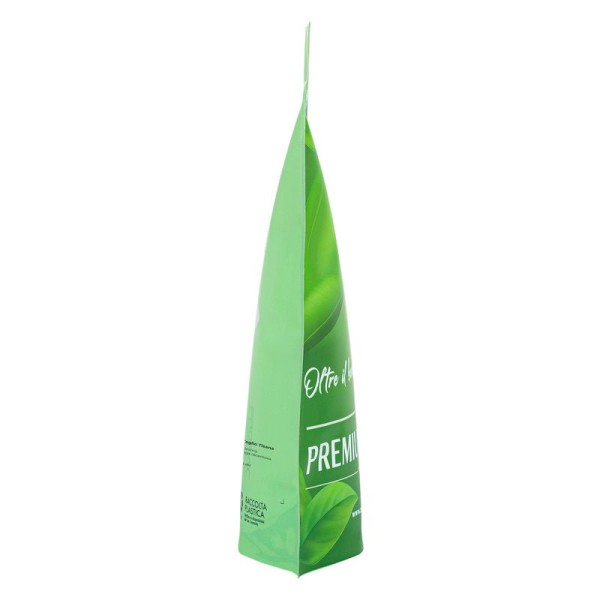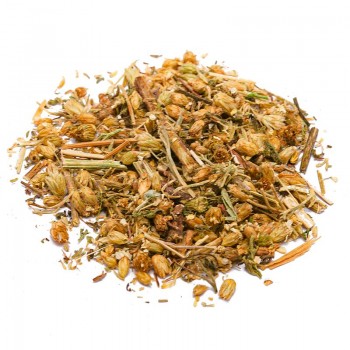Originally from North America, where it is also known as black cohosh, this flowering plant has been considered a natural remedy for women's health in folk medicine.
In particular, its rhizome is used to relieve the symptoms of menopause, and restore hormonal balance.
Black Cohosh rhizome: properties and benefits
The rhizomes of this plant contain various phytochemicals that favor the properties of phytoestrogens, ie plant estrogens.
These are substances that make available properties, through herbal preparations, able to alleviate the symptoms of menopause.
The benefits of black cohosh, therefore, are linked to women's well-being or hormonal balance.
Studies have been carried out on the known action of the rhizome on hot flashes, which can be reduced and found beneficial. The same beneficial effect is linked to the decrease in sweating associated with hot flashes; in addition to acting in a useful way to avoid dizziness and ringing in the ears, irritability, heart palpitations - symptoms typical of this period of female life.
According to some theories, the black cohosh rhizome may be effective because it appears to function as a phytoestrogen, a plant compound that mimics the action of the hormone estrogen.
The herbal tea is also used to soothe premenstrual syndrome and related disorders (fatigue, mood swings, abdominal swelling, breast tenderness, headache, etc.).
Furthermore, the rhizome is useful for promoting the regularity of the menstrual cycle.
Black cohosh can have some beneficial effects on psycho-physical relaxation, particularly in postmenopausal women, by promoting sleep - quality and duration.
The dried rhizome of this plant allows to obtain beneficial results for female well-being.
Even if the active principles of the “black cohosh” and the potential mechanisms of action are not yet fully studied, the traditional uses in herbal medicine of Black Cohosh are recognized.
Some research has found different results for the plant's effects on female physiology, and perhaps the plant could exert its effects through a brain-related action. Such as modulation of serotonin channels, or by acting on estrogen receptors.
In practice, the plant can "mimic" the actions of serotonin to soothe menopausal disorders related to the autonomic system.
Alternatively, its properties could be due to its antioxidant and anti-inflammatory action.
Black cohosh is a plant native to eastern North America (Ontario, central Georgia, Missouri and Arkansas).
Its flowers and roots were commonly used in traditional Native American medicine, who used them to treat gynecological and other ailments.
After the arrival of European settlers in the United States who continued the use of black cohosh, the plant appeared in the United States Pharmacopoeia. It was called black snakeroot because in the nineteenth century the root was used to treat snakebite, inflammation of the respiratory system, and as a pain reliever for childbirth.
Nowadays, the extracts of the underground parts of the plant, ie the rhizome and the root, are used in medicine to obtain extracts useful for the formulation of medicines.
In most European countries, Argentina, China, Malaysia, Thailand and other countries, black cohosh medicinal products are available for the relief of menopausal ailments such as hot flashes and profuse sweating.
In the United States, India and some other countries, rhizome and root are used as food supplements for the same ailments.
Plant and flowers
The scientific names of this plant are Actaea racemosa and Cimicifuga racemosa, also commonly called black cohosh, black bugbane, black snakeroot.
It is a flowering plant of the Ranunculaceae family, grows in a variety of woodland habitats, and is often found in small meadows and clearings. Preferably on the groundor wet.
It is a smooth perennial herbaceous plant, which produces large leaves composed of an underground rhizome, reaching a height of 25-60 cm.
The white flowers appear in late spring and early summer - they have a smell that attracts various insects.
The plant species was classified in the genus Cimicifuga, and then returned to the genus Actaea.
The roots and rhizomes were used in traditional medicine by Native Americans.
The rhizome is a modification of the stem of the plants, an underground swelling, which has a reserve function.
Nutritional values of Black Cohosh - Rizoma
The rhizome of black cohosh contains tannins, salicylic acid and fatty acids, flavonoid antioxidants . Some saponins are present: triterpene saponins and triterpene glycosides (actein and 27-deoxyactein). In addition to cimifugic acids and other phenolic carboxylic acids.
In addition, there are alkaloids, and typical substances such as cimicifugin or racemosin.
How to use Black Cohosh rhizome in herbal tea
The black cohosh infusion formed by the Rizoma Taglio Tisana, is obtained by inserting approximately 3-5 grams with water at 100 ° C into a cup (250 ml).
Leave to infuse for 5 to 7 minutes, before drinking the herbal tea.
Add honey or sugar if desired.
Black Cohosh rhizome: side effects and contraindications
There are some possible adverse reactions to black cohosh such as allergic skin reactions (hives, itching, rash), and gastrointestinal symptoms (dyspeptic disorders, diarrhea).
Beware of very high doses of black cohosh, which can cause nausea, dizziness, lower heart rate and increased sweating.
It can rarely cause liver effects, but it is not recommended for those with liver problems.











 No reward points for this product.
No reward points for this product.


